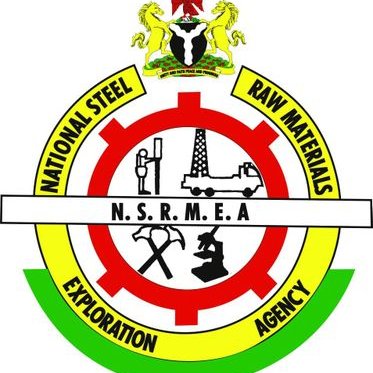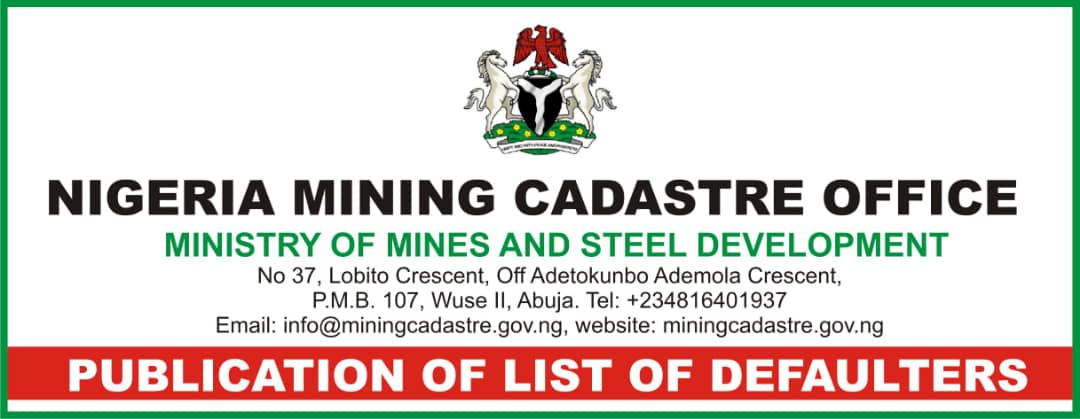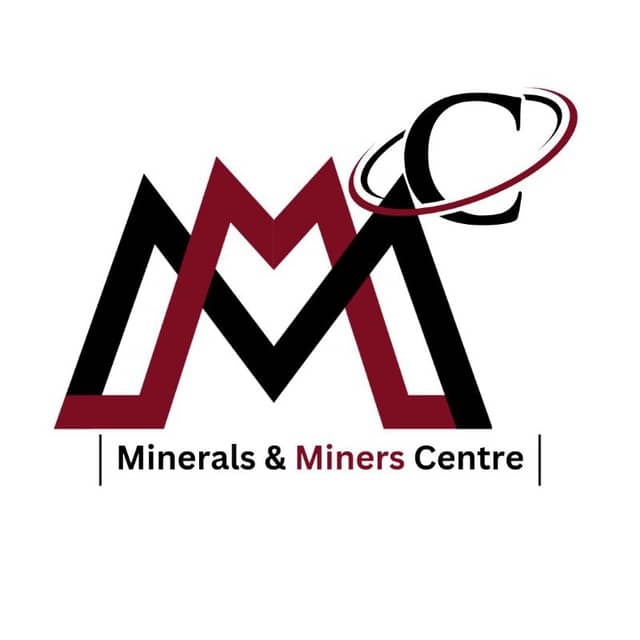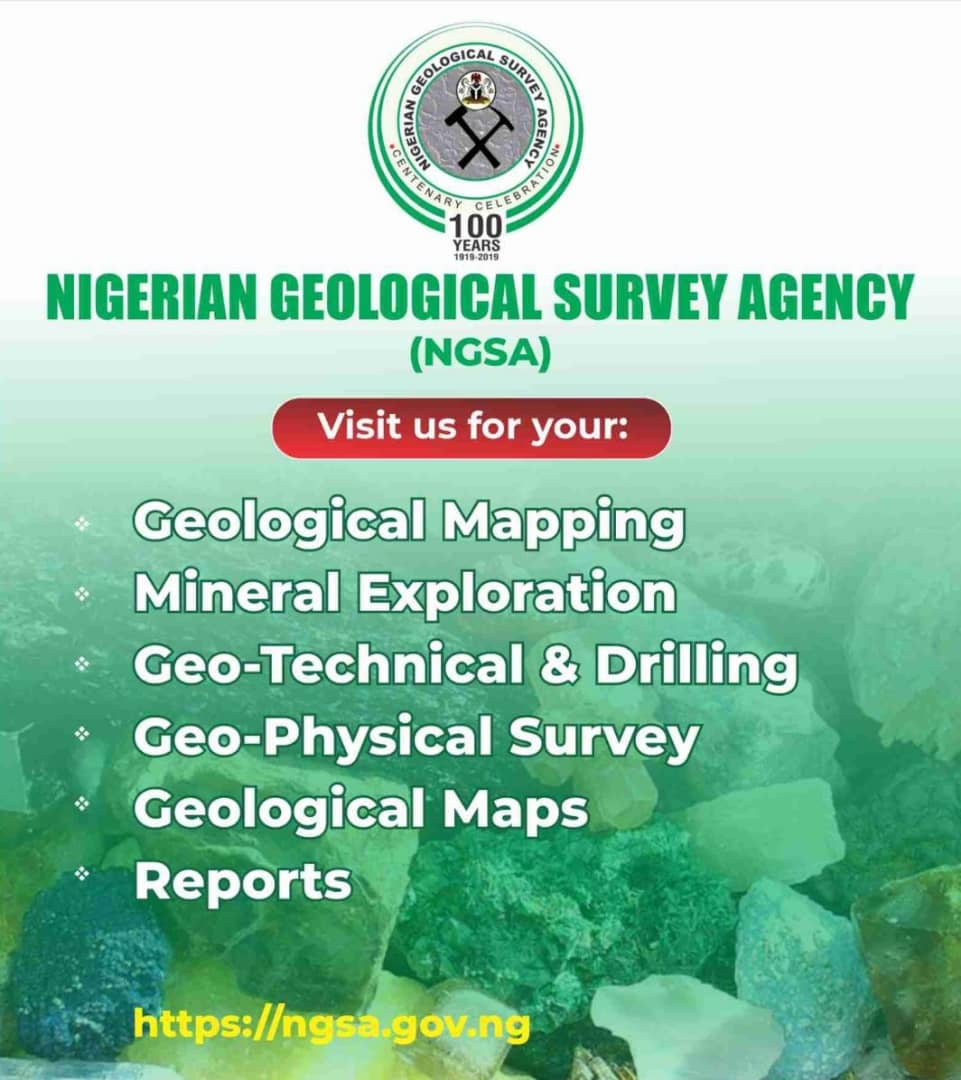- NGSA to organise Mineral Clinics in 36 States of the Federation
- Unveils first-ever Lithostructural Map of Nigeria, presents 3 publications

The Nigerian Geological Survey Agency (NGSA) has tested and analyzed over one hundred mineral samples brought forward by more than four hundred potential investors during its awareness-drive-on-solid-minerals (also known as Mineral Clinic) in the six geopolitical zones of the country; the Director-General of the Agency, Dr. Abdulrazaq Garba has said, adding that as a result of the encouraging response of the public to the awareness drive on how solid minerals can be used to create wealth, the Agency plans to conduct Mineral Clinics in the 36 States of the Federation.
The Director-General who made the disclosure on Saturday while delivering the Keynote Address at the Mega Mineral Clinic of the NGSA held at the Headquarters, in Abuja, also presented the first-ever Lithostructural Map of Nigeria and three publications on the geology of Nigeria, namely, The Phosphate Resources of Nigeria, The Brine Resources of Benue Trough, and Assessment of Graphite in Saulawa Birnin Gwari Area in Kaduna State, Northwest Nigeria.
He explained that the Mineral Clinics proposed for the 36 States will take mineral information/geoscience data to the doorsteps of more investors, stating that the gesture will further strengthen the realisation of the Economic Growth and Recovery Plan (EGRP) and the economic diversification agenda of the Federal Government.
Dr. Garba described the ceremony (Mega Mineral Clinic) as a milestone in the history of the NGSA, noting that the presentation of three publications to the public is the outcome of “our efforts to continuously generate geoscientific data for wealth creation.”
He said: “The success story of NGSA today was achieved by a clear, well-defined and articulate approach which entails proper planning, exploration, evaluation and management of these resources.”
Discussing the connection between the mandate of the NGSA and the Mineral Clinic, the Director General said: “One of NGSA’s mandate is to generate geosciences data for wealth creation and national development. To achieve this, the over 100-year-old exploration Agency stepped up exploration and assessment of projects in Greenfield and Brownfield using a unified sampling and data capturing system in line with international best practices.”
He said the results are amazing because reliable geoscience data in metallic and industrial minerals have been generated and have spurred the desired investment into the sector.
He listed some of the projects to include Gold in She and Kafin-Koro (Niger State), Gwagwalada and Environs (FCT) and Uke (Nasarawa State); Lead/Zinc (Ebonyi State); Kaolin (Ekiti and Kwara States); Phosphate (Sokoto State); Bitumen (Ondo State); Copper in Akiri and Azara and environs (Nasarawa State); Tin and REE in Wamba area (Nasarawa State) and Katsina-Ala and environs (Benue State).
According to Dr. Garba, the data generated by NGSA prompted the Agency to re-organize the mineral clinics in the six geopolitical zones which was a huge success.
“In the zones, over 400 hundred potential investors attended the mineral clinics and over 100 samples of rocks and minerals were tested with Hand-Held XRF free of charge,” he said, adding that the NGSA is currently making plans to extend the gesture to the 36 States of the Federation.
“This we believe will spur the desired goal in creating awareness, sensitization and dissemination of geoscientific data to the lowest level,” he added.
He disclosed that the Agency has procured spectroradiometers and Hand-held XRF spectrometers in order to improve productivity.
“This equipment is useful during exploration as it allows for on-the-spot test of rocks and minerals which serve as a guide in the field. All these equipment are on display today for the public,” he said.
He said to further generate information and get a better understanding on the systems and environments of mineralization and ages of the Nigerian rocks, the Agency has embarked on dating the rocks of the entire country by competent professionals and staff of NGSA, adding that samples have been collected from the northwest and parts of north central Nigeria and analyzed. “This project is at an advanced stage now,” he added.
Discussing the efforts made by the Agency to strengthen professionalism, he said: “On capacity building, NGSA trains its staff across board both locally and internationally to enhance our input and output. For instance, some staff are currently on training at Regional Center for Aerospace Surveys (RECTAS) in Ile-Ife on digitization, interpretation and modelling of geosciences maps to improve our data output.
“In a similar vein, another team of NGSA staff from NGSA Research Laboratory in Kaduna are undergoing training in South Africa on assaying. This we believe will translate into quality analysis of our samples in the laboratory. However, we will continue to strengthen the capacity of staff.”
Further highlighting the imperative of the NGSA Mega Mineral Clinic, Dr. Garba said: “Distinguished guest, today’s mineral clinic is to ensure that the goals scored in the area of geosciences data generation are effectively exposed and digested by the investors, academia, students and stakeholders through sensitization and dissemination of geoscientific information on various solid mineral deposits in the country as well as responding to inquiries from the public.”
He assured that the NGSA will go extra mile to ensure that geoscience information on Nigeria’s mineral resources is disseminated to the public.
Dr. Garba, who was Chairman of the National Integrated Mineral Exploration Project (NIMEP) thanked policy makers, academia, investors, mining enthusiasts and other guests for honoring the invitation, saying that “NGSA will be most fulfilled when people deploy the generated geosciences data available for economic transformation of the country.”








